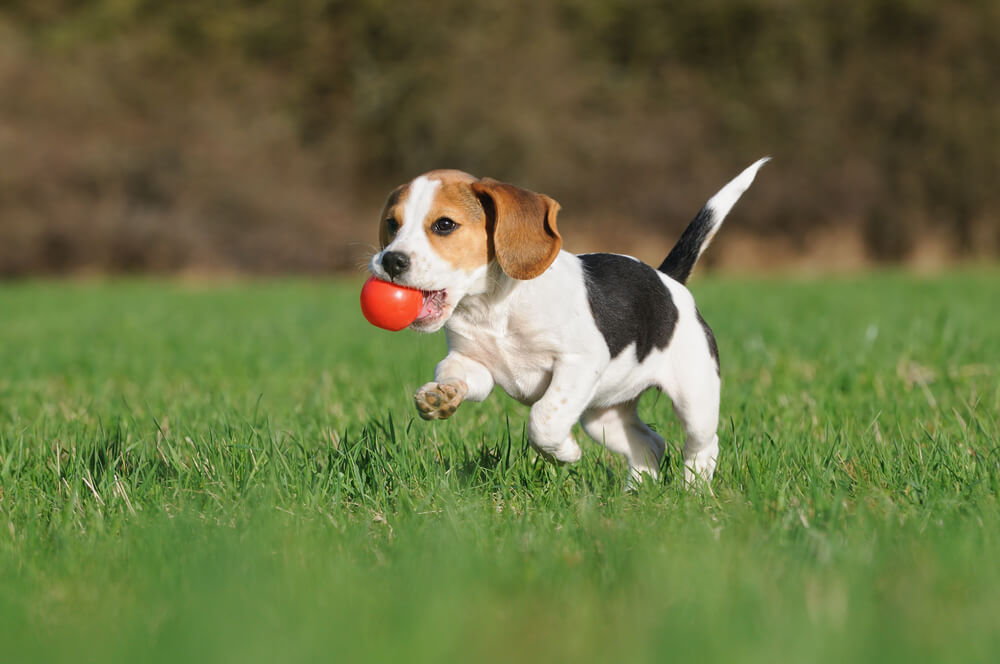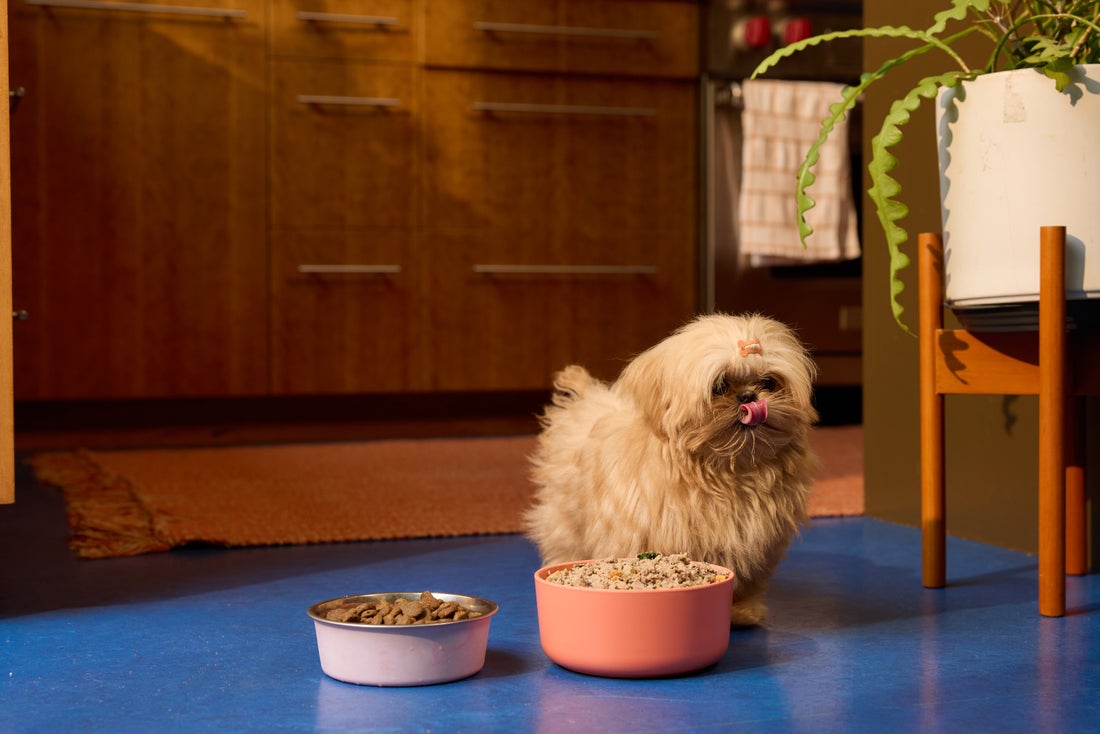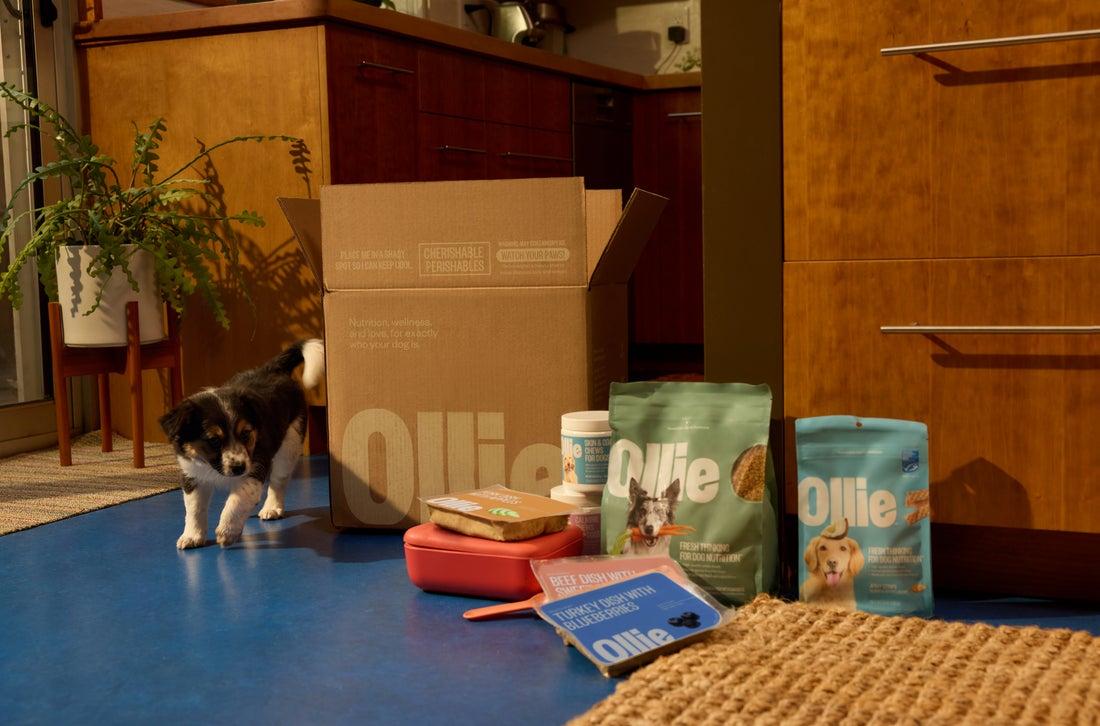Hey Ollie blog readers! We’re offering you an exclusive 60% OFF your starter box! Try now!
You’re chopping herbs for dinner, and a sage leaf slips off the counter. Before you can grab it, your dog scoops it up. Panic mode? Not necessarily. Can dogs eat sage?
Yes, in small amounts,sage is safe for most dogs when used the right way. But like with any herb or seasoning, there are some important things to know before sharing it with your pup.
In this guide, we’ll walk through everything you need to know about sage and dogs, including:
- Whether sage is truly safe
- The potential health benefits
- How much is too much
- And which forms of sage you should definitely avoid
You’ll also learn how the Ollie approach to clean, ingredient-conscious dog food makes it easy to skip the guesswork when it comes to feeding herbs—or anything else.
Let’s take a closer look at sage and whether it belongs in your dog’s bowl.
Can Dogs Eat Sage? Here’s the Short Answer
Yes, dogs can eat sage—but only in small amounts. According to the ASPCA, sage is non-toxic to dogs and generally safe when used in moderation as a food garnish or light seasoning.
Sage contains antioxidants, fiber, and trace nutrients that can be beneficial for dogs. But it’s not something dogs need in their diet, and it should never be a major ingredient.
The key here is balance. Too much sage—especially in concentrated forms like oils or extracts—can irritate your dog’s digestive system or even affect their nervous system.
At Ollie, we stick to ingredients that are both safe and useful for dogs. Our fresh food recipes focus on complete nutrition from real, recognizable ingredients,no guesswork, no risky extras.
Is Sage Safe for Dogs? Understanding the Limits
Sage is generally safe for dogs—but only when it’s used the right way. The form, amount, and how it’s prepared all matter.
Safe:
- Fresh sage leaves (washed, finely chopped, and added in tiny amounts)
- Dried sage (sprinkled sparingly on food, no added salt or seasoning)
These forms are mild and can be safely incorporated into your dog’s meals in very small doses—think a pinch or two, not a pile.
Use with Caution:
- Too much sage
Large amounts of sage can irritate the stomach or, in rare cases, affect the nervous system due to a compound called thujone. - Sage used in human meals
Sage in stuffing, gravies, or butter-heavy dishes isn’t safe for dogs. Those extras—onions, garlic, fats—are off-limits.
Not Safe:
- Sage essential oil
Concentrated oils are dangerous if ingested or applied to your dog’s skin. They can cause vomiting, tremors, or worse. - Sage diffusers or sprays
Dogs can react to strong aromatic compounds through inhalation. If you’re diffusing sage oil at home, make sure your dog has access to fresh air and can leave the room.
According to the ASPCA and Pet Poison Helpline, sage is non-toxic in small culinary doses, but concentrated forms should always be avoided.
At Ollie, we keep it simple. You won’t find risky herbs or essential oils in our fresh food. Just nutrient-dense meat, fruits, and vegetables that dogs can actually benefit from—no second-guessing required.
Potential Health Benefits of Sage for Dogs
When used sparingly, sage can offer more than just flavor. This fragrant herb has been studied for its wellness benefits in humans—and some of those may apply to dogs too.
Here’s what small amounts of sage might do for your pup:
1. Antioxidant Support
Sage contains compounds like rosmarinic acid and carnosic acid, which act as antioxidants. These can help reduce free radicals in the body and support long-term cellular health.
2. Natural Breath Refresher
Because of its mild antibacterial properties, sage may help fight odor-causing bacteria in the mouth. While it’s not a substitute for dental care, it can support fresh breath in small doses.
3. Mild Digestive Aid
Sage has traditionally been used to support digestion and soothe upset stomachs. A tiny sprinkle of dried sage may help reduce gas or bloating, especially when paired with a clean, digestible diet.
4. Anti-Inflammatory Properties
Some research suggests sage has anti-inflammatory effects, which may benefit dogs with minor digestive discomfort or general inflammation—but again, only when used occasionally.
It’s worth noting that these benefits aren’t a reason to start adding sage daily. Your dog’s core nutrition should come from balanced, complete meals—like the ones we make at Ollie. We build every recipe around what dogs actually need, using real ingredients with functional benefits.
When Sage Might Not Be Safe for Dogs
Sage is safe for most dogs in moderation—but there are situations where even small amounts could cause problems. Understanding the context matters just as much as the herb itself.
1. Too Much Sage at Once
Large quantities of sage can upset your dog’s stomach. Symptoms may include:
- Vomiting
- Diarrhea
- Loss of appetite
- Lethargy
Sage contains a natural compound called thujone, which in high doses may affect the nervous system—especially in dogs with pre-existing neurological conditions.
2. Sage Essential Oil
This concentrated form is not safe for dogs in any amount. Whether ingested, inhaled, or applied topically, sage essential oil can cause:
- Tremors
- Disorientation
- Drooling
- Vomiting
The Pet Poison Helpline advises avoiding essential oils around pets unless directed by a veterinarian. Even diffused oils can pose risks to sensitive animals.
3. Dogs With Special Health Conditions
Avoid giving sage (even culinary forms) to dogs who:
- Have a history of seizures
- Have liver disease
- Are on medications that interact with herbs or oils
When in doubt, it’s always safest to check with your vet—especially if your dog has underlying health issues or is on a prescription diet.
How to Safely Add Sage to Your Dog’s Diet
If you want to try adding a little sage to your dog’s meals, it’s all about keeping it minimal and simple. Sage isn’t a necessary part of your dog’s diet, but when used correctly, it can be a safe way to add a touch of flavor or support digestion.
Here’s how to do it right:
Safe Ways to Add Sage
- Dried sage: A small pinch (less than ¼ teaspoon) sprinkled over food once or twice a week
- Fresh sage: Finely chopped and added sparingly to home-cooked dog-safe veggies or lean meat
- Mixed with bland foods: Works well with plain pumpkin, rice, or Ollie’s gently cooked fresh meals
Avoid These Mistakes
- Don’t use sage mixed with garlic, onion, butter, or salt
- Don’t serve large leaves or full sprigs (harder to digest)
- Never use sage essential oils or concentrated extracts
Start Small and Watch Closely
Always introduce any new herb slowly. Give your dog a tiny amount the first time and monitor for:
- Changes in appetite
- Loose stool or vomiting
- Signs of allergies (itching, swelling, discomfort)
If your dog tolerates it well, you can include sage as a once-in-a-while treat—not a daily habit.
Unsafe Sage Products to Avoid
Not all forms of sage are safe for dogs. While culinary sage can be fine in small amounts, other versions—especially concentrated or processed ones—can be harmful.
Here’s what to keep away from your pup:
1. Sage Essential Oils
Whether applied to the skin, added to food, or diffused in the air, sage essential oil is unsafe for dogs. It’s highly concentrated and can cause:
- Vomiting
- Drooling
- Disorientation
- Seizures in sensitive dogs
Even passive exposure, like breathing in diffused oil, can be irritating—especially for dogs with respiratory or neurological issues.
2. Sage-Scented Candles, Sprays, and Diffusers
Products designed for humans often contain essential oils that are too strong for dogs. Airborne compounds can:
- Cause eye or nose irritation
- Lead to coughing or sneezing
- Overwhelm your dog’s sensitive sense of smell
If you’re using a sage-based product in your home, make sure your dog has access to fresh air and a scent-free space to retreat to.
3. Sage-Flavored Human Foods
Many sage-flavored dishes contain toxic ingredients like onions, garlic, or butter. Common examples:
- Stuffing
- Sausages
- Gravy mixes
- Pre-seasoned meats
Even small bites of these foods can be dangerous—especially due to hidden ingredients not listed on packaging.
Bottom line: Stick to plain, dog-safe herbs in moderation—and always skip anything with oils, artificial flavoring, or seasonings made for people.
FAQs Sage For Dogs
Can dogs eat dried sage?
Yes, dried sage is safe for dogs in very small amounts. A light sprinkle (less than ¼ teaspoon) once or twice a week can be fine. Just make sure it’s plain, with no added salt or spices.
Is cooked sage safe for dogs?
Cooked sage is safe if it’s part of a simple, dog-friendly recipe. Avoid serving sage from human dishes that contain butter, garlic, onions, or heavy seasoning, all of which can be harmful to dogs.
Can dogs eat sage essential oil?
No. Sage essential oil is toxic to dogs. It should never be given orally, applied to their skin, or used in areas where they can inhale it for long periods.
Can sage cause diarrhea in dogs?
Yes, if a dog eats too much sage, or if they’re sensitive to herbs, it can lead to diarrhea or stomach upset. Always start small and monitor your dog for any changes.
Is sage good for dogs with bad breath?
In small amounts, sage may help support fresher breath thanks to its natural antibacterial properties. But it’s not a replacement for dental care. For dogs with chronic bad breath, a vet visit is the best next step.
Tagged As:

The nutrition your dog needs,
the food they want.

Enjoying our articles? Subscribe our Newsletters and get new articles directly to your inbox
You might also like
23 June 2025
7 MINS READ
Is Fresh Dog Food Good For Picky Eaters?
Feeding a picky dog can feel like a daily battle. One day they eat, the next day they turn their nose up at the same exact meal. You’ve probably tried multiple brands, added toppers, even hand-f…
by Ollie Pets
23 June 2025
7 MINS READ
Can Fresh Dog Food Improve My Dog’s Coat and Skin?
If your dog is constantly scratching, licking their paws, or has a dull, flaky coat, it’s not just frustrating. It could be a sign that something’s off in their diet. Skin and coat issues a…
by Ollie Pets
23 June 2025
7 MINS READ
Can All Dog Breeds Eat Fresh Dog Food?
Every dog is different, but here’s the good news: with the right approach, fresh food can work for every breed. Whether you’ve got a couch-loving French Bulldog or a high-energy Border Coll…
by Ollie Pets







